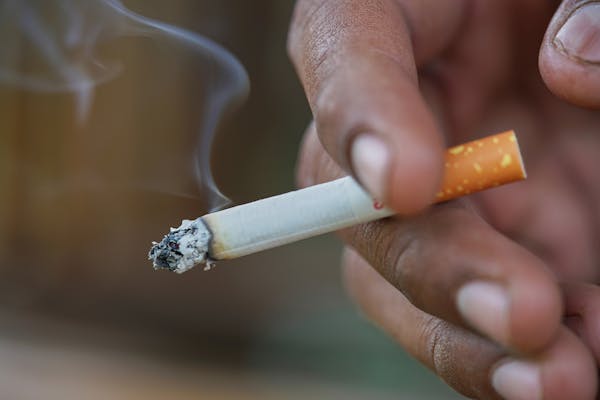Mike Alhataba says he believes 2022 will kill his Oxboro Market tobacco store after more than 20 years in business. The reason: Bloomington will enact a flavored tobacco ban in January, then roll out one of Minnesota's strictest tobacco regulations later in the new year.
After banning the sale of all flavored tobacco products Jan. 1, the city will initiate in June a sunset on tobacco licenses with the intention of eliminating all tobacco sales in the west metro city.
Bloomington has long been a leader in tobacco regulations, but it's not alone in banning the sale of flavored products. Beginning in the new year, 22 cities across the state will have enacted flavored tobacco regulations, according to the Association for Nonsmokers-Minnesota.
Four other cities passed regulations similar to Bloomington's this year. Columbia Heights, Roseville and Shoreview now restrict the sale of all flavored tobacco to anyone younger than 21 at adult-only tobacco stores. In May, Shoreview approved adding menthol to its existing flavor restriction.
But Bloomington and Moorhead will prohibit all flavored tobacco products come the new year. At tobacco stores such as Alhataba's, the vast majority of products sold are flavored tobacco, unlike gas stations where other products would make up the loss in inventory. That's why he fears he may have to lay off some or all of his six employees.
"This is very extreme," said Alhataba, who manages the store owned by his father-in-law Khaled Aloul. "With the new law, I don't know what will happen. Some people will lose their jobs. ... I'm losing a lot."
In December, there were 57 active tobacco licenses in Bloomington. Oxboro Market opened a second location this year after securing a tobacco license in May, a month after the Bloomington City Council voted to ban flavored tobacco and put in place the sunset on tobacco licenses. That means when a store closes, the license will expire and not be renewed. Bloomington is the only city in Minnesota and one of the few cities in the U.S. to have tobacco licenses sunset.
The most sweeping and strict tobacco regulations in the state took effect in St. Paul this month. The City Council passed an ordinance to raise the price of a pack of cigarettes to $10 and ban the redemption of coupons for all tobacco and vaping products, along with other measures, such as reducing the number of available tobacco licenses.
What's happening in Bloomington and St. Paul may signal what's on the horizon for the state.
In 2022, the advocacy group Minnesotans for a Smoke-Free Generation will again pursue a statewide ban on flavored tobacco products. The group says this step is being taken in part because of the support that local policies have had around the state.
"I definitely feel as though there's momentum from communities around the state that they're signaling that a state policy is something that legislators should consider," said Jenny Song, senior communications and advocacy consultant with Blue Cross and Blue Shield of Minnesota and spokeswoman for Minnesotans for a Smoke-Free Generation.
Song said she believes the timing for such legislation is critical when considering the high rate of teen vaping, which she and health experts call an epidemic.
The 2020 Minnesota Youth Tobacco Survey found four out of five students said their first use of tobacco was flavored, and one in five students uses e-cigarettes, which are most often flavored.
Another notable tobacco sunset for the state next year is the end of ClearWay Minnesota, the nonprofit tobacco control organization established in 1998 with a small portion (3%) of the state's landmark $6.1 billion tobacco settlement.
Song said the absence of ClearWay will be felt in 2022 and the state urgently needs to invest more to combat the youth tobacco epidemic.
Less than 1% of the $760 million the state brought in from tobacco taxes, known as a sin tax, and settlement fees went toward tobacco prevention and treatment in 2020, Song said. The vast majority went into the state's general fund to pay for infrastructure, education and public safety.
The disparity is undeniable, she said.
"It is very curious that so little actually goes towards dealing with the issue that is still the leading cause of preventable death and disease," Song said.

Teen suspect in Nudieland mass shooting arrested on murder, assault charges
'Human error' behind Robbinsdale shelter-in-place alert that was mistakenly sent countywide

Going to Wolves or Twins tonight? How to get there (and maybe avoid traffic).
Focusing on bringing football film into frame

